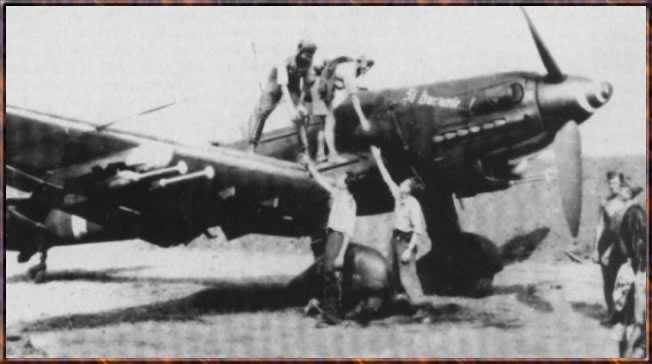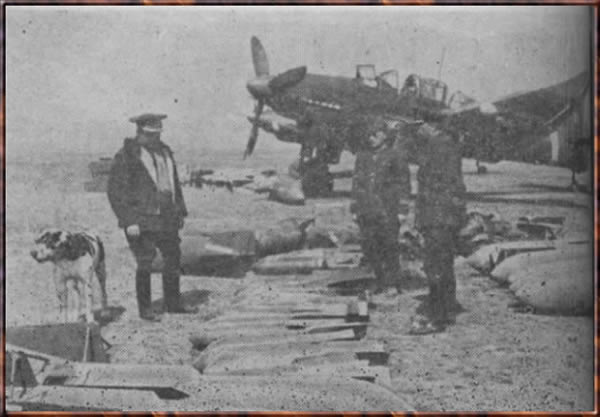
|
|
|
|
|
|
|
|
|
|
|
|
|
|
|
|
|
|
The Junkers Ju-87D dive bomber
|
|
|

A Romanian Ju-87D on the east front. Summer 1943
|
|
|
|
|

A Junkers Ju-87D in Czehia. Spring of 1945
|
|
Technical data of the Junkers Ju-87D3
|
Wingspan
|
13.8 meters
|
|
Length
|
11.5 meters
|
|
Height
|
3.89 meters
|
|
Weight (empty)
|
3900 kg
|
|
Weight (loaded)
|
5842 kg
|
|
Maximum speed at 4000 meters
|
410 km/h
|
|
Maximum operational ceiling
|
7300 meters
|
|
Range
|
821-1535 km
|
|
Engine
|
Junkers Jumo-211J1 rated at 1410 HP
|
|
Armament
|
Two forward-facing 7.92 mm machine guns plus one rear-firing
7.92 mm machine gun
|
|
Payload
|
Up to 1800 kg of bombs attached on three hardpoints
|
|
Crew
|
2
|
|
Numbers received
|
30
|
Technical data of the Junkers Ju-87D5
|
Wingspan
|
15 meters
|
|
Length
|
11.5 meters
|
|
Height
|
3.89 meters
|
|
Weight (empty)
|
3900 kg
|
|
Weight (loaded)
|
5842 kg
|
|
Maximum speed at 4000 meters
|
410 km/h
|
|
Maximum operational ceiling
|
7300 meters
|
|
Range
|
821-1535 km
|
|
Engine
|
Junkers Jumo-211J1 rated at 1410 HP
|
|
Armament
|
Two forward-facing 7.92 mm machine guns plus one rear-firing
7.92 mm machine gun
|
|
Payload
|
Up to 1800 kg of bombs attached on three hardpoints
|
|
Crew
|
2
|
|
Numbers received
|
30
|
* Both versions could optionally carry two 20 mm canons mounted in gondolas underneath the wings instead of bombs